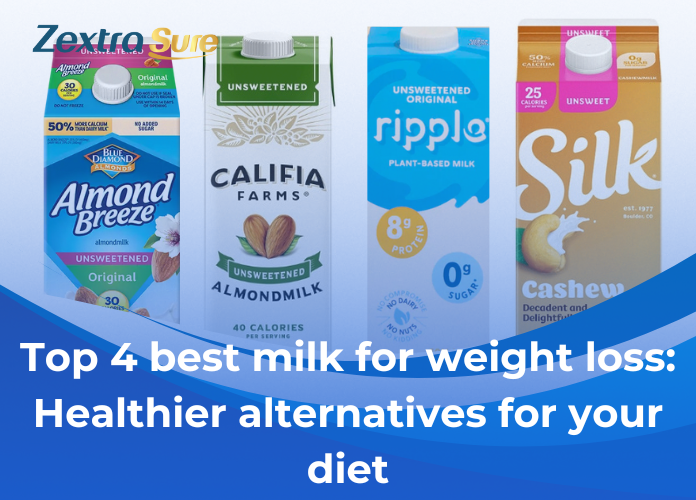What is the pH of milk? The importance of measuring this index

Milk is known for its rich taste and nutritional value. Beyond its surface appeal, milk’s chemical properties, especially its pH, play a significant role in its behavior, shelf life, and applications. Understanding the pH of milk is essential for consumers and professionals in food science and nutrition. Zextrasure will reveal the pH of milk, its variations, and its importance in daily life.
1. What is the pH?
The pH scale measures how acidic or basic a substance is, ranging from 0 to 14.
- A pH of 7 is neutral, like pure water.
- A pH below 7 is acidic; the lower the number, the more acidic the substance.
- A pH above 7 is basic (or alkaline).
.png)
- The pH of scale
2. What is the pH of milk?
The pH of milk typically ranges from 6.5 to 6.7, making it slightly acidic. This range can vary depending on the type of milk, its processing origin, and storage conditions. Here’s a breakdown of the pH of milk under different circumstances:
|
Fresh milk |
Processed milk |
Spoiled milk |
|
|
pH of milk |
6.7 |
6.5 |
below 5 |
Fresh milk
Fresh milk, straight from the cow or processed minimally, generally has a pH of milk around 6.7. This slight acidity is due to the presence of natural acids like lactic acid and other compounds.
Processed milk
Pasteurization or other processing methods can slightly alter the pH of milk, often lowering it to around 6.5. The processing helps reduce bacterial load, which can influence acidity levels.
Spoiled milk
Because milk spoils, bacteria convert lactose (milk sugar) into lactic acid. This process drastically lowers the pH of milk, often to values below 5. This acidic environment is one of the main reasons why spoiled milk has a sour taste and curdles.
Learn more: How much does a gallon of milk weigh?
3. pH of different types of milk
Milk isn’t a one-size-fits-all product. The types of milk have unique pH values based on their composition and processing. Let’s explore the pH of milk:
.png)
pH of milk varies depending on composition and processing
Whole milk
What is the pH of whole milk? Whole milk has a pH of milk around 6.6. This value can vary slightly depending on processing.
Skim milk
Skim milk, with reduced fat, has a similar pH of milk to whole milk, usually around 6.5 to 6.7. The removal of fat doesn’t significantly impact pH.
Lactose-free milk
Lactose-free milk has added lactase enzymes, which break down lactose into glucose and galactose. This process doesn’t significantly alter the pH of milk, keeping it close to 6.6.
Plant-based milk
Though not true milk, plant-based alternatives like almond, soy, and oat milk often have a different pH range. For comparison:
- Oat milk: 6.0-6.2
- Soy milk: 6.3-6.5
4. Factors influencing the pH of milk
Several factors affect the pH of milk, including its source, processing, and storage. Let’s explore these in detail:
Animal source
The type of animal producing the milk can impact its pH. For instance:
- Cow’s milk typically has a pH of milk around 6.5-6.7.
- Goat’s milk may have a slightly lower pH, around 6.4-6.6.
Temperature
Milk's pH can shift with temperature changes. When milk is heated, the proteins denature and can release more acidic compounds, slightly lowering the pH of milk.
Microbial activity
Bacteria in milk ferment lactose, producing lactic acid. As this process progresses, the pH of milk decreases, especially in spoiled or fermented milk products like yogurt.
5. The importance of the pH of milk
Understanding the pH level of milk is crucial for various reasons, particularly in food science, health, and industry. Here are some key areas where the pH of milk plays a vital role:
.png)
It is important to measure the pH of milk because it affects freshness and food safety
Preservation and shelf life
The pH of milk is an indicator of its freshness. Fresh milk has a relatively stable pH, but a significant drop often signals spoilage. Monitoring pH during storage can help determine its usability.
Dairy production
Products like cheese, yogurt, and buttermilk rely on controlled fermentation, which alters the pH of milk. For example:
- Cheese production typically requires a pH between 4.6 and 5.2, which milk proteins coagulate to form curds.
- Yogurt production involves reducing the pH of milk to around 4.5 for the desired tangy flavor and thick texture.
Food safety
A sudden change in the pH of milk can indicate contamination or spoilage. Regular pH monitoring ensures safety in dairy production and consumption.
The pH of milk is a basic property that affects its taste, shelf life, and nutritional value. Understanding this index ensures safety and helps you optimize its daily use.
Related Articles
- Experts answer: Can you refreeze breast milk?
- Unlocking secret: Does almond milk need to be refrigerated?
- Unsweetened Oat Milk: Top 5 choices you should try!
- Top 4 best milk for weight loss: Healthier alternatives for your diet
- How to froth milk without a frother: 4 easy and effective ways
- How to make sour milk at home in just 5 minutes








